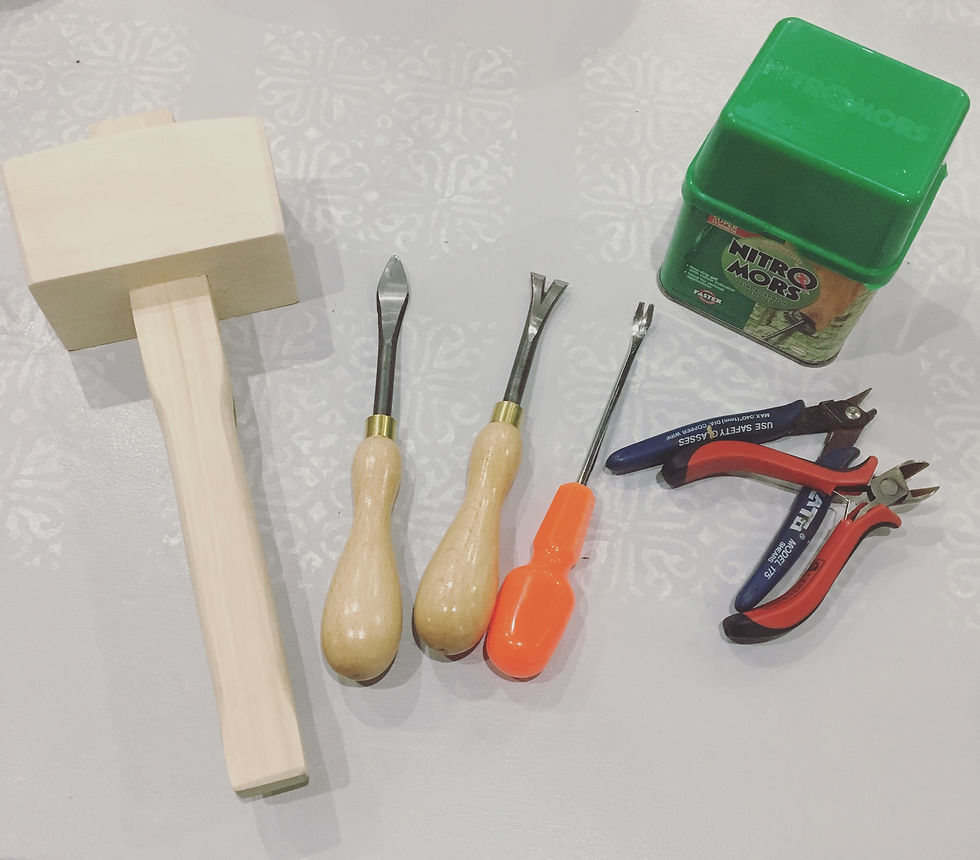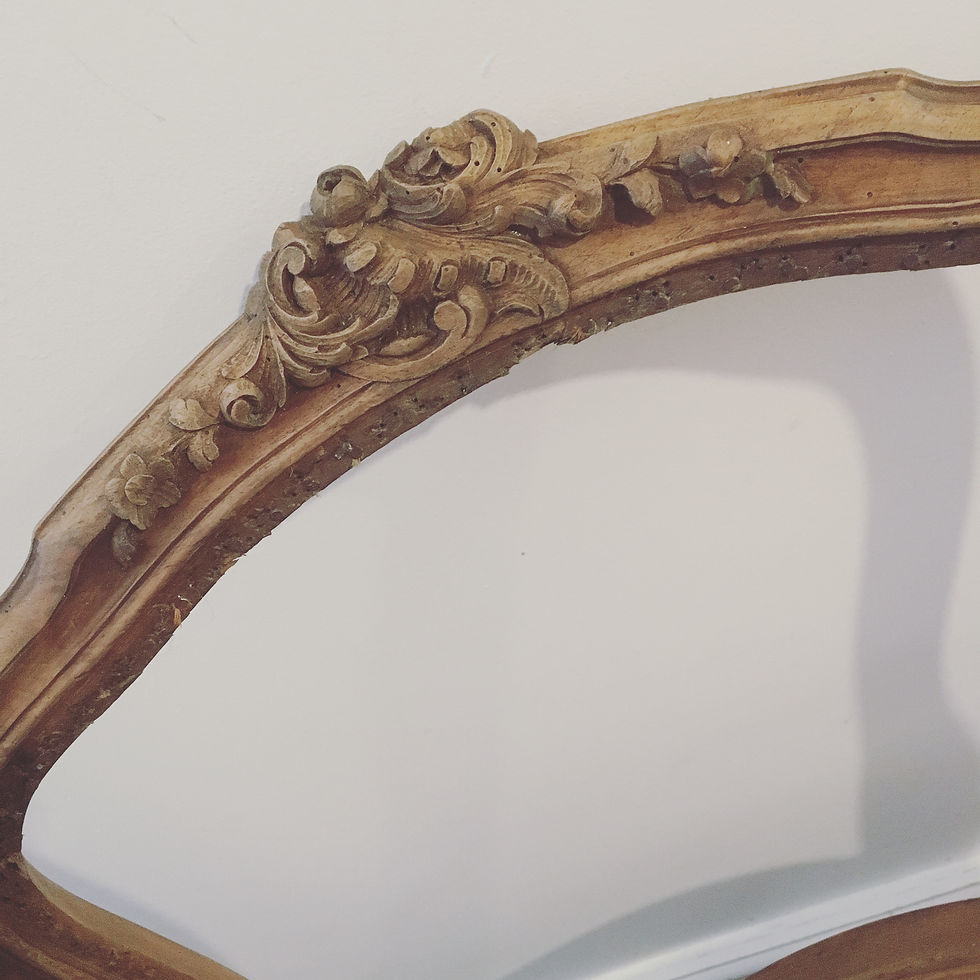Re-Upholstering a French Chair - Part 1, Deconstruction and Stripping
- Sam Taylor
- Mar 6, 2017
- 4 min read

Following on from my previous blog post: French Louis XV Fauteuil Renovation Project, in this post I will cover the upholstery process - breaking it down into stages, so you can see how the process develops.
To kick-off any upholstery project, first you need to make sure have the right tools for the job, and for this stage, you will need:-
Tools
Gloves - a pair of protective gloves. You won't believe how many cuts, grazes and blood blisters you will build up if you don't.
Safety glasses - the removal of rusty old upholstery tacks is a messy job and they have a nasty habit of going flying through the air, often towards your face.
Tack lifter - I have two different sized tack lifters that I like to alternate between.
Staple remover - I didn't need this tool for this project, but it's always handy to have it on hand.
Wooden mallet - to help shift those pesky tacks.
Small wire plyers / Cutters - great for grabbing tack heads where a tack lifter fails.
Wire wool and varnish stripper - optional.

When starting any upholstery project, it's always a good idea to make sure you work in an area where there's enough space to move around and enough light to see what you are doing.
Bearing in mind tacks will invariably go flying, I would suggest working in a space that is child and pet free as those tacks can be very painful if stepped on.
I also like to work at bench height to save me from bending down constantly.
Start the deconstruction process by working around the edges of the chair frame, removing any fabric or nail-head trim.

By lifting the trim you will reveal the tacks that hold the fabric in place.
Apply your safety gloves and goggles and use the tack lifter or mini plyers to remove the tacks around the edge of the existing fabric.
Note: be careful not to press the tack lifter into the wood when raising the tacks as it will damage and/or leave an indentation in the wood.
This chair is an antique and therefore the tacks have turned rusty over time which can make them a little harder to remove. Brushing the old tacks with a small wire brush will help remove any built-up rust and help you locate the tack head.

There’s no need to remove all the tacks, and in a piece this old, I am reluctant to do so as it may do more harm than good and hinder the integrity of the beautiful antique wooden frame.
When removing the old fabric, try and aim to keep each piece of fabric in one whole section as you can then use them as a template to help cut your new fabric.
My chair pads have been stuffed with black horse hair and incased in a hessian type frame, which use to be a very traditional method for filling and shaping antique upholstery. The horse hair is a rich and wiry black colour, indicative of a quality piece.
More modern chairs will have foam seat pads.

The majority of my filling seems to have fared well, although I may add a little more cotton batting to the seat base to make it more comfortable to sit on.
I’ve already inspected the springs underneath and they look fine but I recommend you inspect your chair springs to ensure they are fit for purpose and don't require replacement.
I've slowly removed the hessian frame holding the horse hair on the back seat pad, as want to attach my new fabric to the wood frame and not glue it on, as the previous owner had done.
By removing the back seat pad on an antique piece like this, you can also access the many old tacks used to secure it in place, which in this case, feels like hundreds.

I’ve noticed a few tiny wood worm holes on this piece, which is typical of an antique chair this old.

I’ve had these chairs a while now and been monitoring them so pretty sure there is no active woodworm, but just to be certain, I have treated them with some professional grade wood worm killer.
Once the chair has been stripped of its fabric, this is the time to do any remedial work to the frame, such as treat any woodworm, splits or damage and/or strip any paint or varnish.
My chair is covered in a shiny French polish which I want to remove, so I've applied a liberal amount of Nitromors paint stripper with some medium / fine wire wool and gently started to rub away the layer of French polish to reveal that beautiful raw wood state underneath.



Note: if using any form of paint or varnish stripper, make sure you are in a well ventilated room.
Remove any excess paint stripper with a warm soapy cloth and then dry down the chair frame as much as possible, making sure it's clean and any rust dust is removed.

I've used an old toothbrush to get in the grooves of the carvings and give it a good clean.
In my next blog post in this series, I will be covering the more fun part of upholstery - adding my new fabric to the chair.










































